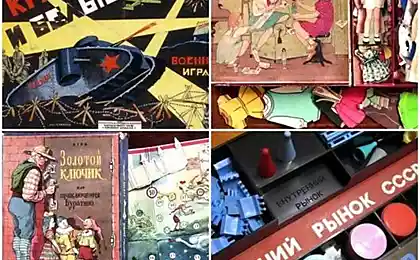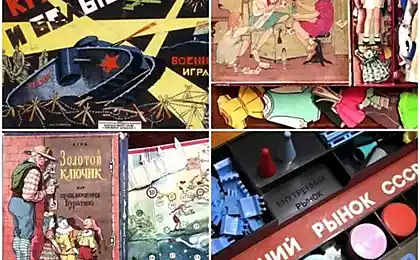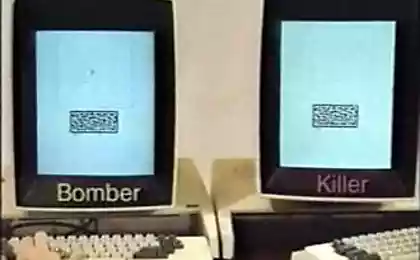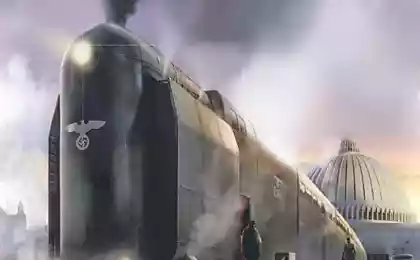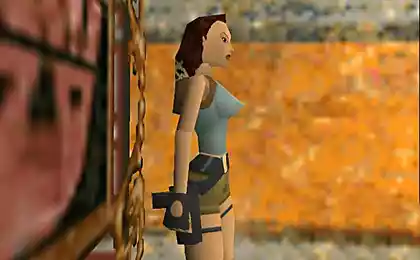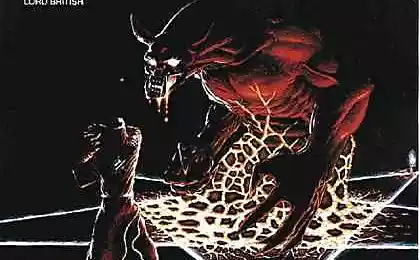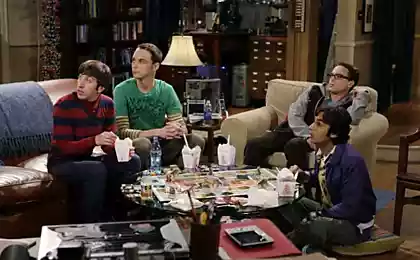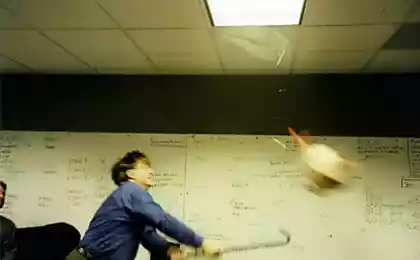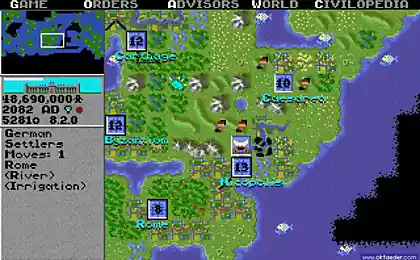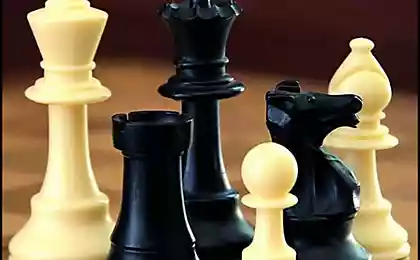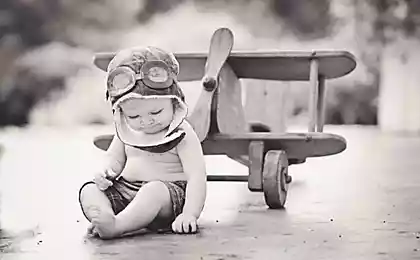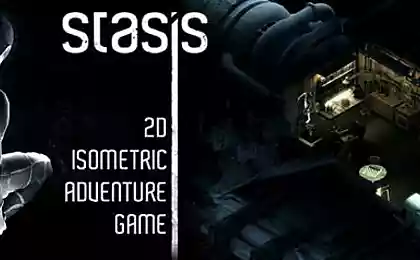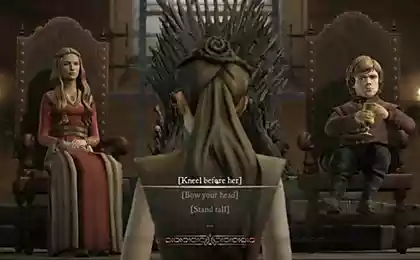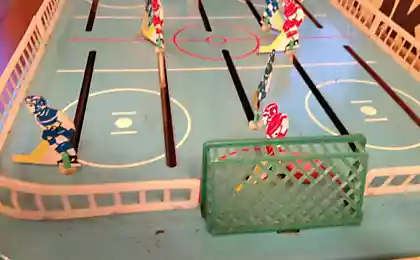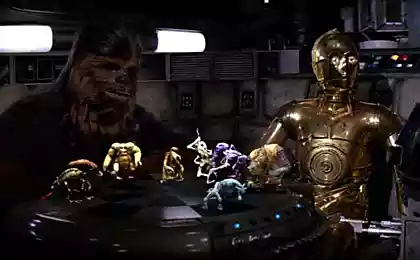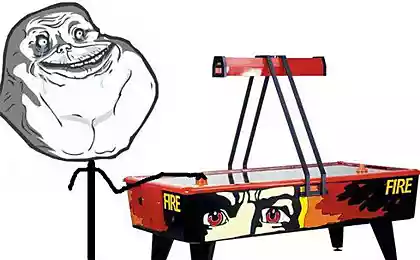1044
Board Games Third Reich
Name the Reich Minister of Propaganda and Education Dr. Joseph Goebbels was a household name.
In propaganda, the Nazis knew a lot.
Means of propaganda were not only issues of newsreels, newspaper articles and posters on the walls, but also the children's board games.
Let us look more closely to ensure that the children played in the Third Reich ...
September 15, 1935 in Nuremberg was accepted by the notorious racial laws.
According to these laws, the Jews were deprived of virtually all civil rights and are marginalized.
Manufacturers of table games quickly respond to changes in German legislation.
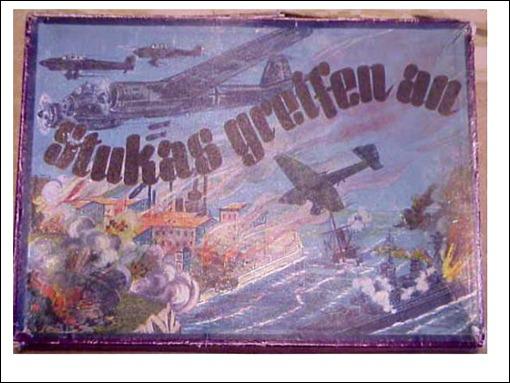
Juden Raus! (Jews - out of here!)
Already in 1936, he left the game Juden Raus! (Jews - out of here!). Of course, tell anyone normal ordinary Germans in 1936, the year of the impending "final solution" of the Jewish question, the German would have turned his finger to his temple and foaming at the mouth to prove that this can not be. So, in the game it is not about "special treatment stocks."
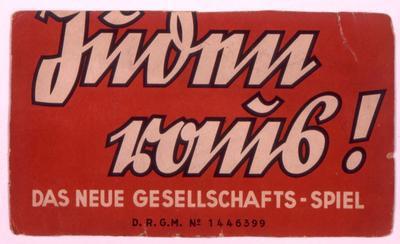
The player will need to bring the six Jews from the city and take them to a collection point, from where they will travel to Palestine. It is not so easy - someone from the game of the Jews is not all right with the documents, someone does not want to go to Palestine ... The rules say "you have won a clear victory, if you managed to expel all six of the Jews." < br />
So in this game looked Jews
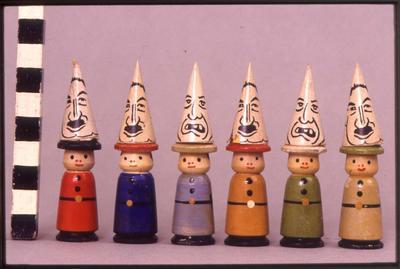
The game was released in great quantities - the Nazis tried to make it reached every German child.
Despite the fact that there is no question of mass executions and gas chambers, Juden Raus! considered one of the most notorious games.
Indeed, everybody remembers what happened when the young players have grown.
The playing field.

Jagd auf Kohlenklau (Hunt for coal thief)
Perhaps this is the most innocent and peaceful of board games published in Nazi Germany. However, without the propaganda, and there has not been. The game became an integral part of the propaganda campaign «Kampf dem Kohlenklau» (Fighting coal thief), which started June 23, 1942.
The campaign called on Germans to save coal and vain not to burn electricity. In the summer of 42, the Germans are getting closer to the Volga and the foothills of the Caucasus, North Africa for the Wehrmacht was too close to the banks of the Nile. Victory seemed to them inevitable. However, a major consumer of electricity and coal was (and stayed to the last day of the war) military industry.
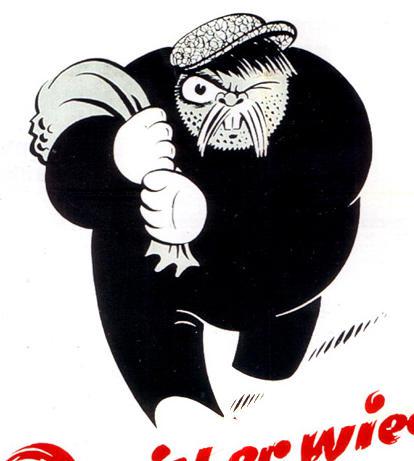
Visual embodiment of wasteful and irresponsible Germans began Kohlenklau - Coal thief.
Under the rules of the game dedicated to the hunt for this bad man, the players move on the playing field, divided into cells of three different colors. Black cell means extra points - the player is to save fuel and energy for their Fatherland, the red cell - on the contrary, the player saves energy and not lose points, the white cell - there is no anything.
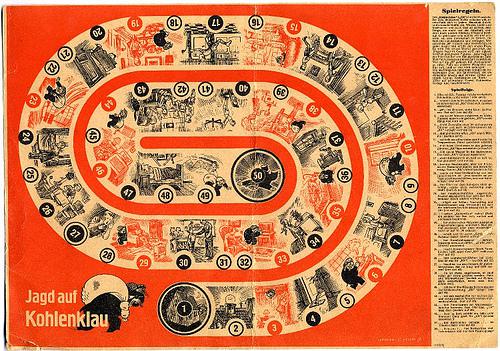
Let's talk about the military board games, popular in the Third Reich. What the children play in a country at war? That's right - the war they played. Games have become a kind of pre-conscription training. Board Games - is no exception. Instead, board games are a very effective means of war propaganda.
In a country that started the Second World War, including the children's board games, of course, dominated by "war-game" - the war games are not too sophisticated desktop strategy. But there were exceptions to this rule. There were in the Third Reich and board games, a pinball-like. Here is a typical example.
"Bombers over England." The game was published before the Germans moved May 10, 1940 in the attack on the Western Front and in record time defeated France and took off into the sea the British Expeditionary Force at Dunkirk.
Air "Battle of Britain" was also ahead. But Britain bombed German children to the winter of the 40th year. Rules of the Game "Bombers Over England" very simple - there is the playing field, in the playing field has holes, and there is little "catapult", shoot balls.
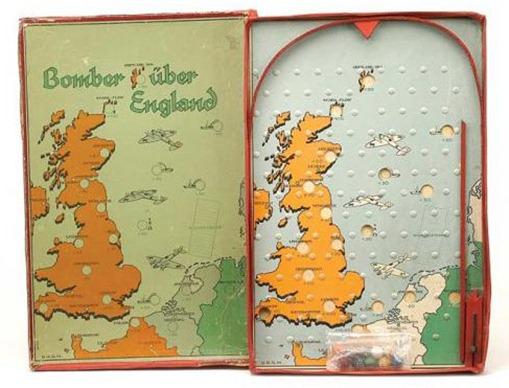
Successful hit ball into the hole, meaning the British city, brings the player bonus points. The holes on the playing field is not only in England and painted on the coast of Western Europe (not yet occupied by the Germans), but also at sea. They mean the ships that would be nice to sink.
This "catapult", which was produced with the help of the bombing. True, these "Catapult" from other games. Later, dedicated to "vundervaffe" (miracle weapon) - ballistic missile V-1.
Scans the playing field of the game, we find, alas, failed. But it is known that the feature of this game was that you can get a ballistic missile was not only in London but also in Berlin. In this case, the player removes all points scored, and comrades on the game could easily squeal to the Gestapo.
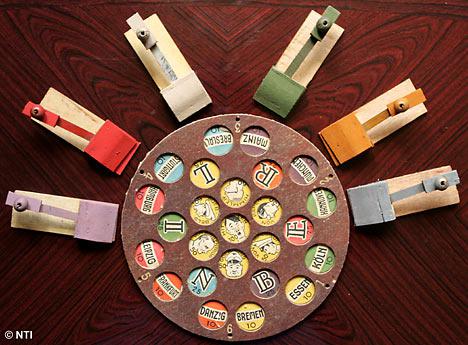
Stuka Atack
But what looked German "war-game" - not very sophisticated tactical and strategic board game? Here is a typical example. Before you board game "Attack of thing". "Thing" is Sturzkampfflugzeug - dive bomber.
The most famous German dive bomber Ju-87 was (Ju-87, our soldiers called him "laptezhnikom" because of the fixed landing gear fairings). At the beginning of World War II, this aircraft was a symbol of "blitzkrieg" - lightning war, a symbol of victory, which Germans seemed inevitable.
So there is nothing surprising in the fact that on the screens of German cinema in 1941 there was a film «Stukas!», While the German children in the same year an opportunity to play a board game "Attack of thing".
Photo box (in the post title)
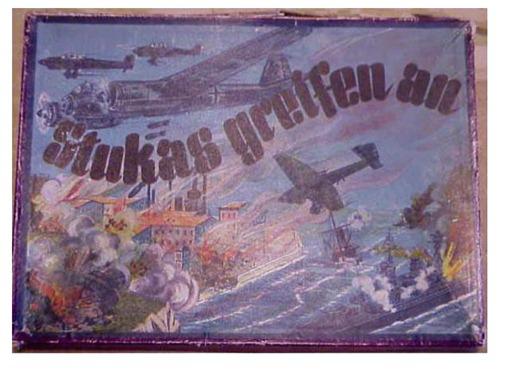
The rules, as always simple - the player throwing the dice, you need to bring the aircraft to the enemy base, bombed and return to their base. On the way back and forth to avoid enemy anti-aircraft guns and searchlights.
Games in the Third Reich was a means of propaganda. And this propaganda has been very effective. In the last days and hours of the war our soldiers had to deal with teenagers from the Hitler Youth.
Of course, the chances of survival in these adolescents were close to zero. And Dr. Joseph Goebbels, on whose conscience lay the lives of these boys, committed suicide May 1, 1945, previously sent to the light his wife and six of their children.
The playing field.
via
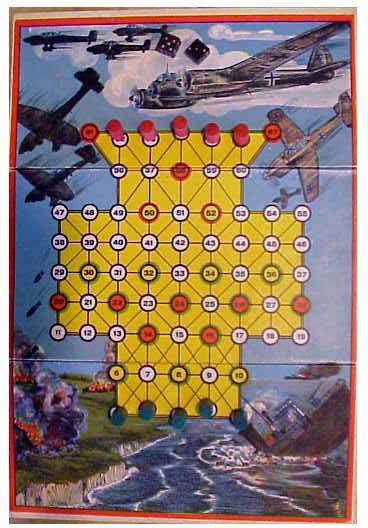
Source:
In propaganda, the Nazis knew a lot.
Means of propaganda were not only issues of newsreels, newspaper articles and posters on the walls, but also the children's board games.
Let us look more closely to ensure that the children played in the Third Reich ...
September 15, 1935 in Nuremberg was accepted by the notorious racial laws.
According to these laws, the Jews were deprived of virtually all civil rights and are marginalized.
Manufacturers of table games quickly respond to changes in German legislation.

Juden Raus! (Jews - out of here!)
Already in 1936, he left the game Juden Raus! (Jews - out of here!). Of course, tell anyone normal ordinary Germans in 1936, the year of the impending "final solution" of the Jewish question, the German would have turned his finger to his temple and foaming at the mouth to prove that this can not be. So, in the game it is not about "special treatment stocks."

The player will need to bring the six Jews from the city and take them to a collection point, from where they will travel to Palestine. It is not so easy - someone from the game of the Jews is not all right with the documents, someone does not want to go to Palestine ... The rules say "you have won a clear victory, if you managed to expel all six of the Jews." < br />
So in this game looked Jews

The game was released in great quantities - the Nazis tried to make it reached every German child.
Despite the fact that there is no question of mass executions and gas chambers, Juden Raus! considered one of the most notorious games.
Indeed, everybody remembers what happened when the young players have grown.
The playing field.

Jagd auf Kohlenklau (Hunt for coal thief)
Perhaps this is the most innocent and peaceful of board games published in Nazi Germany. However, without the propaganda, and there has not been. The game became an integral part of the propaganda campaign «Kampf dem Kohlenklau» (Fighting coal thief), which started June 23, 1942.
The campaign called on Germans to save coal and vain not to burn electricity. In the summer of 42, the Germans are getting closer to the Volga and the foothills of the Caucasus, North Africa for the Wehrmacht was too close to the banks of the Nile. Victory seemed to them inevitable. However, a major consumer of electricity and coal was (and stayed to the last day of the war) military industry.

Visual embodiment of wasteful and irresponsible Germans began Kohlenklau - Coal thief.
Under the rules of the game dedicated to the hunt for this bad man, the players move on the playing field, divided into cells of three different colors. Black cell means extra points - the player is to save fuel and energy for their Fatherland, the red cell - on the contrary, the player saves energy and not lose points, the white cell - there is no anything.

Let's talk about the military board games, popular in the Third Reich. What the children play in a country at war? That's right - the war they played. Games have become a kind of pre-conscription training. Board Games - is no exception. Instead, board games are a very effective means of war propaganda.
In a country that started the Second World War, including the children's board games, of course, dominated by "war-game" - the war games are not too sophisticated desktop strategy. But there were exceptions to this rule. There were in the Third Reich and board games, a pinball-like. Here is a typical example.
"Bombers over England." The game was published before the Germans moved May 10, 1940 in the attack on the Western Front and in record time defeated France and took off into the sea the British Expeditionary Force at Dunkirk.
Air "Battle of Britain" was also ahead. But Britain bombed German children to the winter of the 40th year. Rules of the Game "Bombers Over England" very simple - there is the playing field, in the playing field has holes, and there is little "catapult", shoot balls.

Successful hit ball into the hole, meaning the British city, brings the player bonus points. The holes on the playing field is not only in England and painted on the coast of Western Europe (not yet occupied by the Germans), but also at sea. They mean the ships that would be nice to sink.
This "catapult", which was produced with the help of the bombing. True, these "Catapult" from other games. Later, dedicated to "vundervaffe" (miracle weapon) - ballistic missile V-1.
Scans the playing field of the game, we find, alas, failed. But it is known that the feature of this game was that you can get a ballistic missile was not only in London but also in Berlin. In this case, the player removes all points scored, and comrades on the game could easily squeal to the Gestapo.

Stuka Atack
But what looked German "war-game" - not very sophisticated tactical and strategic board game? Here is a typical example. Before you board game "Attack of thing". "Thing" is Sturzkampfflugzeug - dive bomber.
The most famous German dive bomber Ju-87 was (Ju-87, our soldiers called him "laptezhnikom" because of the fixed landing gear fairings). At the beginning of World War II, this aircraft was a symbol of "blitzkrieg" - lightning war, a symbol of victory, which Germans seemed inevitable.
So there is nothing surprising in the fact that on the screens of German cinema in 1941 there was a film «Stukas!», While the German children in the same year an opportunity to play a board game "Attack of thing".
Photo box (in the post title)

The rules, as always simple - the player throwing the dice, you need to bring the aircraft to the enemy base, bombed and return to their base. On the way back and forth to avoid enemy anti-aircraft guns and searchlights.
Games in the Third Reich was a means of propaganda. And this propaganda has been very effective. In the last days and hours of the war our soldiers had to deal with teenagers from the Hitler Youth.
Of course, the chances of survival in these adolescents were close to zero. And Dr. Joseph Goebbels, on whose conscience lay the lives of these boys, committed suicide May 1, 1945, previously sent to the light his wife and six of their children.
The playing field.
via

Source:

